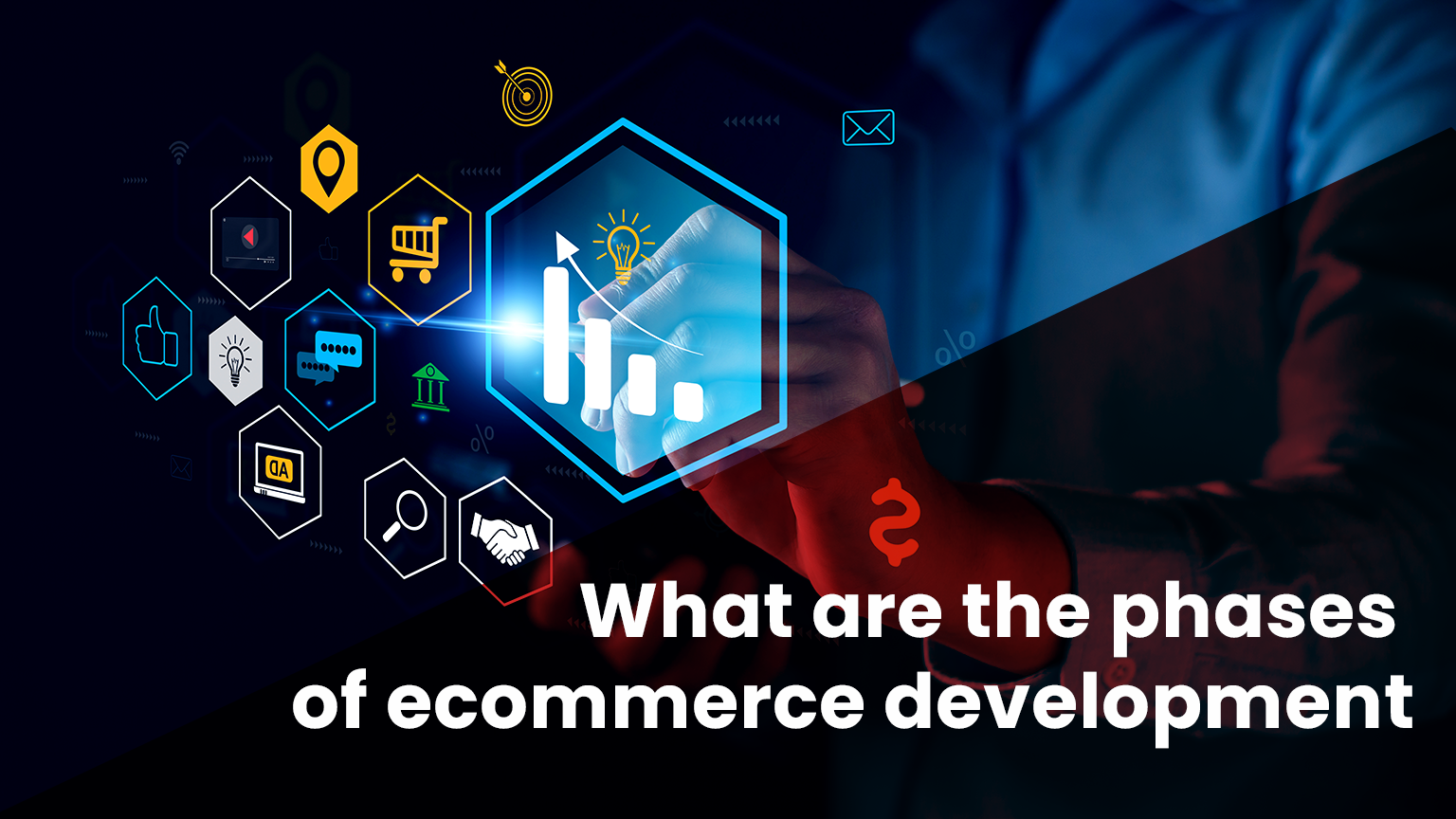Ecommerce Development Success Online
In the fast-paced world of eCommerce, the journey from an idea to a successful online store occurs in various phases. These phases ensure your online business thrives in the digital landscape.
From conceptualization to launch and beyond, each phase plays a vital role in your eCommerce success story. In this article, we’ll look into the different phases of eCommerce development and guide you through the key steps you should take to stay ahead of the competition.
Phase 1: Research and Planning
The journey begins with in-depth research and detailed planning. You must identify your target audience, understand their needs, and analyze the competition. This phase is crucial as it sets the foundation for your eCommerce venture. The steps in this phase include:
Conduct Market Research
To outrank your competitors, you must start by understanding your market. Analyze trends, and customer behavior, and identify gaps your eCommerce store can fill.
Create a Business Plan
A well-defined business plan outlines your goals, strategies, and financial projections. It’s the roadmap to your eCommerce success.
Choose the Right Niche
Select a niche that aligns with your passions and expertise. Ensure there’s demand for products or services within that niche.
Phase 2: eCommerce Development
With the planning in place, it’s time to build your eCommerce website. Your website is your online storefront, and it needs to be user-friendly, visually appealing, and optimized for search engines.
Design and User Experience
Your website’s design should be responsive and have an intuitive layout. Use high-quality visuals and clean typography to enhance the user experience. A smooth user experience is key to keeping visitors engaged.
SEO Optimization
Optimize your website for search engines to improve its visibility. Use relevant keywords, and meta tags, and create exceptional content.
eCommerce Platform Selection
Choose the right eCommerce platform that suits your business needs. Popular options include Shopify, WooCommerce, and Magento.
Phase 3: Content Creation
Compelling content is the heart of your eCommerce business. It educates, persuades, and engages your audience.
Product Descriptions
Write informative and persuasive product descriptions. Highlight the benefits and features of your products.
Blog and Articles
Maintain a blog with informative articles that address your customers’ pain points and interests.
Visual Content
Incorporate high-quality images and videos to showcase your products effectively.
Phase 4: Testing and Quality Assurance
Before launching your eCommerce store, it’s crucial to test and ensure everything is working seamlessly.
Cross-Browser and Device Testing
Test your website on different browsers and devices to ensure compatibility.
Payment and Security Testing
Verify that payment gateways are secure and functional, providing a safe shopping experience.
Load Time and Performance
Optimize your website’s load time and overall performance for a smooth user experience.
Phase 5: Launch and Marketing
Now that your eCommerce store is ready, it’s time for the grand launch.
Social Media Promotion
Leverage social media platforms to create a buzz and attract your target audience.
Email Marketing
Build an email list and use it for promotional campaigns, discounts, and engaging with your customers.
Paid Advertising
Invest in pay-per-click (PPC) advertising campaigns to increase your store’s visibility.
Phase 6: Post-Launch Optimization
Your journey doesn’t end at the launch; it’s just the beginning. Continuous improvement is vital for long-term success.
Customer Feedback and Reviews
Listen to your customers and use their feedback to make improvements.
Analytics and Data Analysis
Regularly analyze website traffic and sales data to identify areas for optimization.
Scaling and Diversifying
As your eCommerce business grows, consider expanding your product range or targeting new niches.
Conclusion
In the ever-evolving realm of eCommerce, the path from an initial idea to the end product has several distinct phases, each integral to your eCommerce success.
eCommerce development requires adaptability, innovation, and a keen understanding of the evolving needs and preferences of your target audience.
By understanding the key phases and taking the recommended steps, you’ll be better prepared to navigate the complexities of the eCommerce world and position your online business for long-term success.
Remember, in e-commerce, staying ahead of the competition isn’t just a goal; it’s a necessity. Embrace these phases as opportunities, and with the right approach and dedication, your eCommerce venture can not only thrive but also leave a lasting mark in the digital marketplace.
Frequently Asked Questions (FAQs)
What are the key phases of eCommerce development, and why are they important for building success online?
The key phases of eCommerce development are Research and Planning, Website Development, Content Creation, Testing and Quality Assurance, Launch and Marketing, and Post-Launch Optimization. They are important for building success online by providing structure and direction to your eCommerce business.
Can you provide an overview of the initial phase in e-commerce development and its significance in establishing a strong online presence?
The initial phase in eCommerce development is Planning and Research. It’s crucial because it sets the foundation by defining your business concept, target audience, and goals, helping you understand the market and customer needs.
What strategies and considerations should I keep in mind during the launch phase of my eCommerce store?
During the launch phase of your eCommerce store, focus on a user-friendly website with clear navigation. Develop a solid marketing plan to reach your target audience. Ensure payment and security systems are robust. Have a well-defined logistics and shipping strategy. Offer excellent customer support and gather feedback for future improvements.
What are some common challenges that businesses face during the phases of eCommerce development, and how can they overcome them?
Common challenges in eCommerce development include competition, security concerns, logistics, technical issues, regulatory compliance, and scaling. Businesses can overcome them through investments in security, customer-centric strategies, and agile practices.
Are there specific strategies or best practices that can help entrepreneurs thrive in the ever-changing landscape of eCommerce throughout the various development phases?
Strategies for success in eCommerce include a customer-centric approach, omnichannel presence, data-driven decision-making, personalization, responsive web design, content marketing, social commerce, continuous learning, and testing and optimization. Adaptability and innovation are key to thriving in the ever-changing eCommerce landscape.








